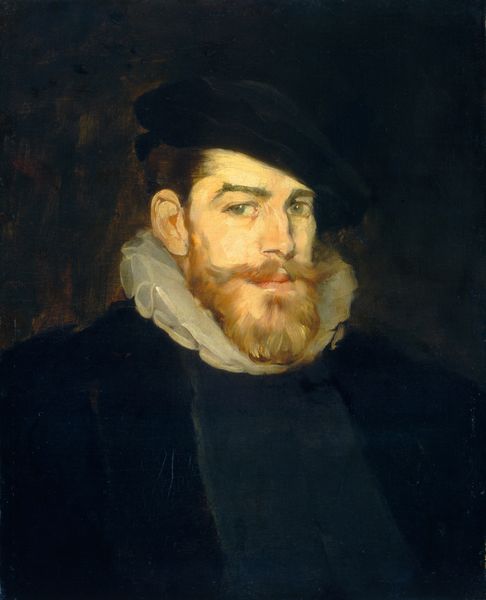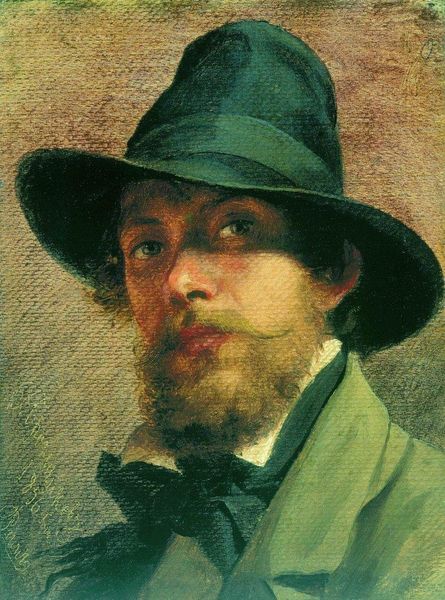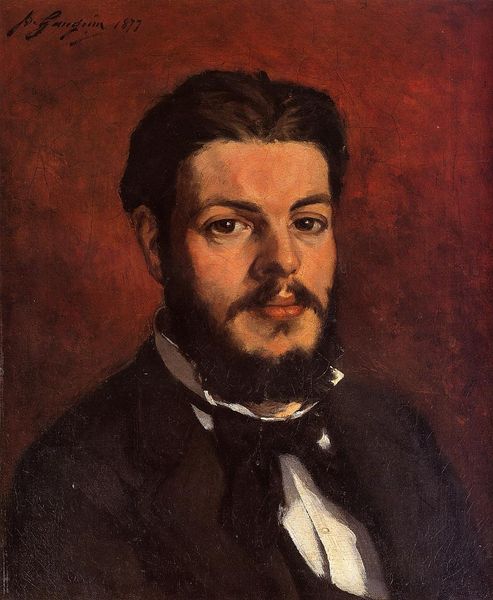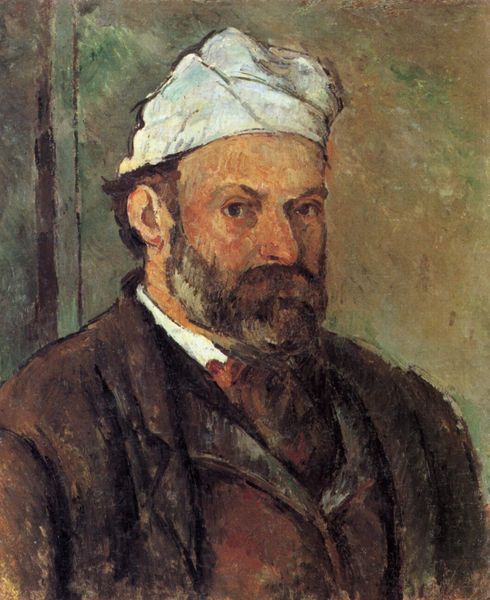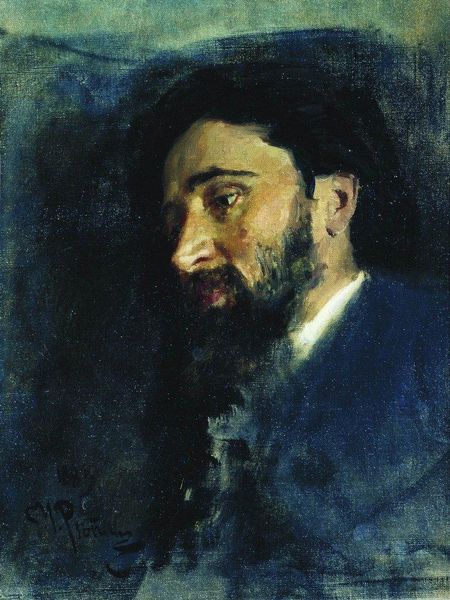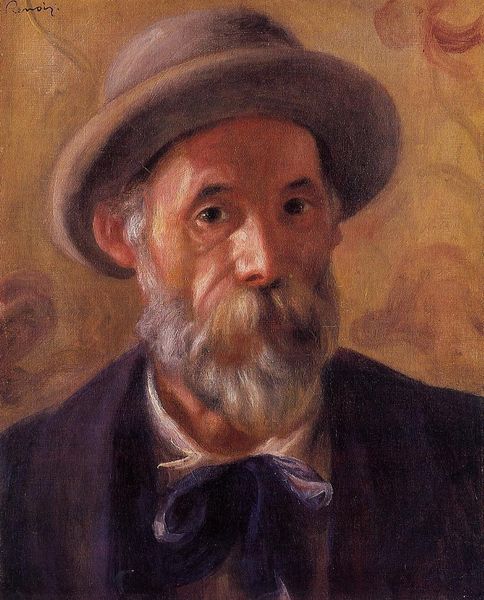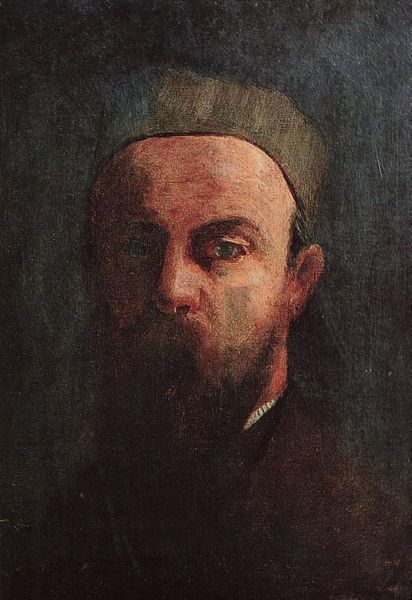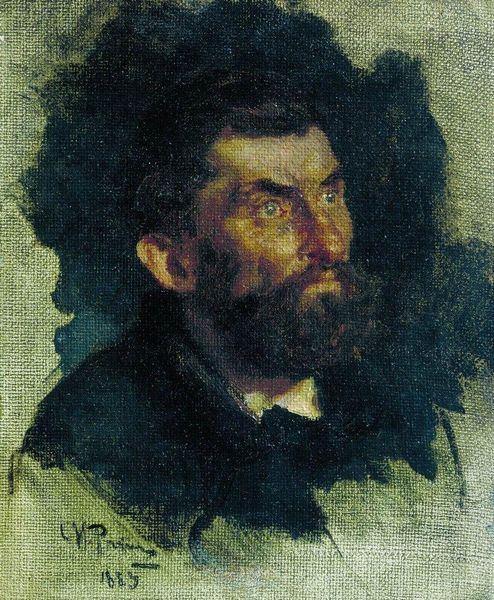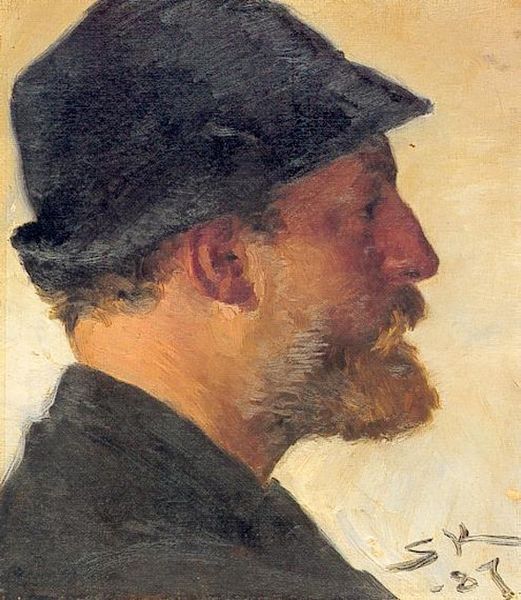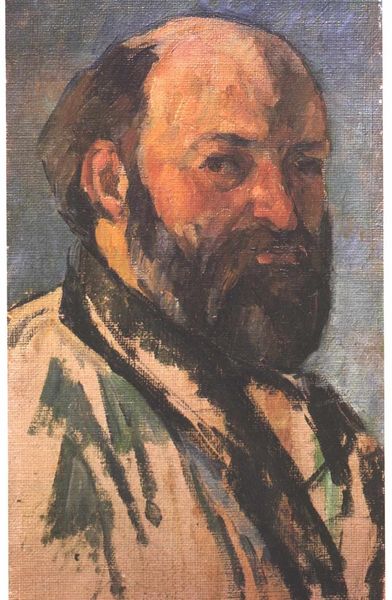
Copyright: Public domain
Curator: Here we have Eliseu Visconti’s Self-Portrait, rendered in oil paint in 1910. What's your initial take? Editor: My first impression is of quiet introspection. The palette is muted, and there's a vulnerability in his gaze that’s almost unnerving. He's inviting us into his personal space. Curator: Visconti was a key figure in introducing Impressionism to Brazil, after his studies in France. This self-portrait is interesting in that it bridges his academic training with the more modern, looser brushwork he embraced later. The context is one where Brazilian art scene was seeking a modern identity. Editor: Yes, you can see the push and pull between tradition and modernity, particularly in his choice of attire – the hat perhaps being the key symbolic marker here, indicating the artist’s self-image. To me, it signifies a certain bohemian aspiration. Curator: Absolutely, the hat, while fashionable, is also a symbol of the artist’s identity in that era, consciously crafting an artistic persona. Think of Courbet and his famous self-portraits! And note Visconti's posture; there is confidence despite the reserved expression. This image entered Brazilian cultural memory by marking Visconti within the modernist art scene, which later helped consolidate his position. Editor: Precisely. The subtle use of light, concentrating on his face, creates a sense of psychological depth, drawing attention to the inner world. The slightly unfocused gaze evokes a dreamer. It prompts questions about the anxieties and aspirations of an artist at the cusp of significant social and aesthetic changes. Curator: And while seemingly conventional as a self-portrait, Visconti used it as a declaration. He presents himself as both craftsman and intellectual in a society undergoing modernization. Editor: A quiet moment of defiance perhaps? Curator: It can be seen that way, definitely. The history books place this portrait within the rise of Brazilian modernism but I also consider it a private document that gained public significance over time. Editor: And ultimately, that private document becomes part of a broader, shared cultural history. It’s that tension, between the personal and the public, which I find so compelling in self-portraits. Thank you for revealing that rich context.
Comments
No comments
Be the first to comment and join the conversation on the ultimate creative platform.
